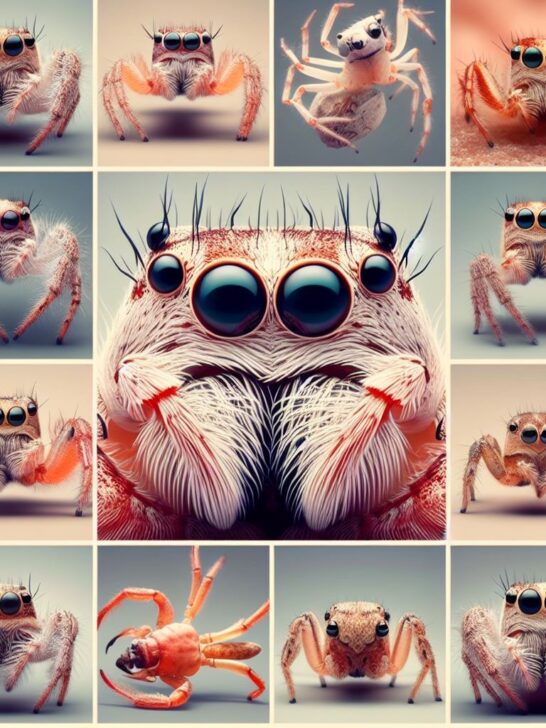Playing dead, also known as thanatosis, is a fascinating defensive behavior observed in various animals, including spiders. When threatened, certain spider species may adopt this strategy as a means of evading predators or avoiding confrontation. In this article, we will explore a diverse array of spider species known to exhibit thanatosis, delving into their behavior, habitats, physical characteristics, and unique adaptations.
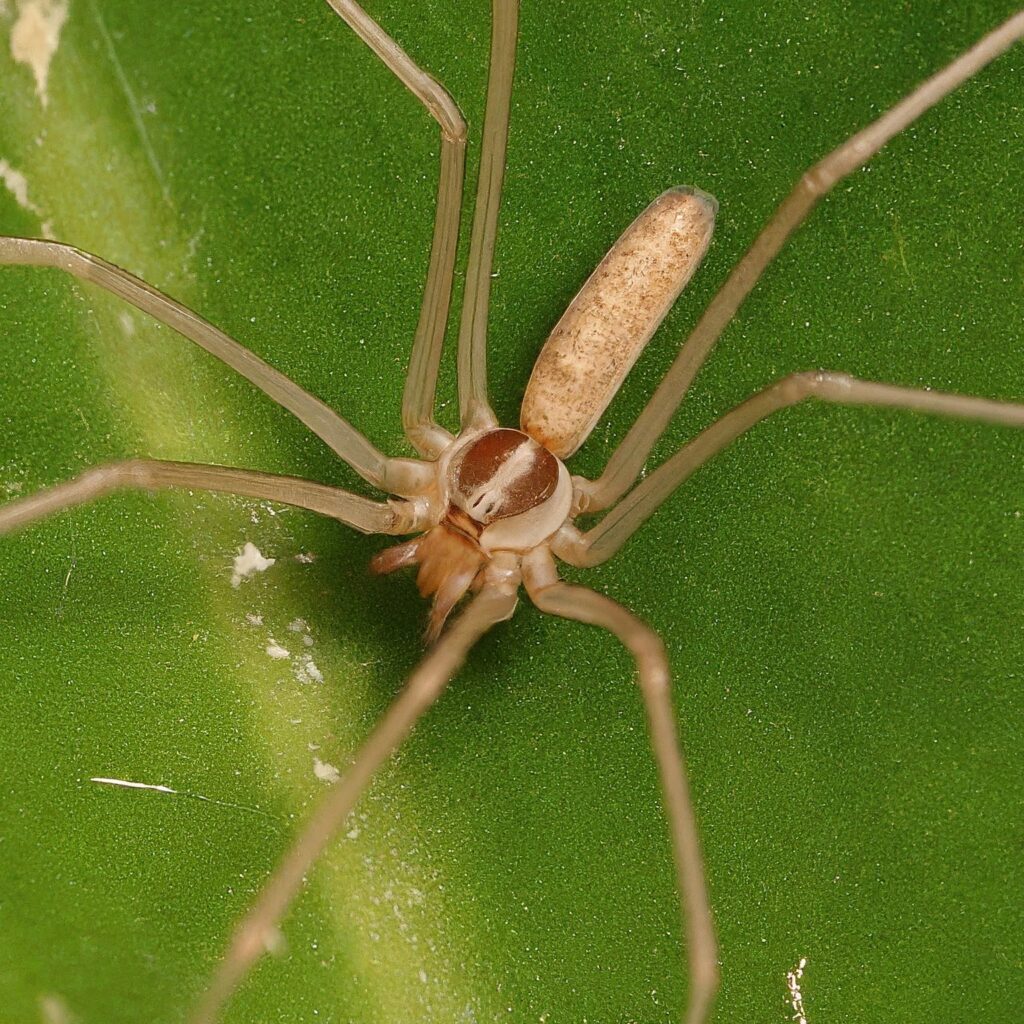
Post Contents
- 1. Southern House Spider (Kukulcania hibernalis)
- 2. Black Widow Spider (Latrodectus spp.)
- 3. Wolf Spiders (Lycosidae family)
- 4. Jumping Spider (Salticidae family)
- 5. Tarantula (Theraphosidae family)
- 6. Nursery Web Spider (Pisauridae family)
- 7. Huntsman Spider (Sparassidae family)
- 8. Giant House Spider (Eratigena atrica)
- 9. Goldenrod Crab Spider (Misumena vatia)
- 10. Orchard Spider (Leucauge venusta)
- 11. Common House Spider (Parasteatoda tepidariorum)
- 12. Fishing Spider (Dolomedes spp.)
- 13. Cellar Spider (Pholcidae family)
- 14. Lynx Spider (Oxyopidae family)
- Conclusion
- FAQ (Continued)
1. Southern House Spider (Kukulcania hibernalis)
- Physical Characteristics: Southern house spiders are medium-sized spiders with elongated bodies and long, thin legs. They are typically dark brown to black in color.
- Habitat: Found primarily in the southeastern United States, southern house spiders inhabit dark, sheltered areas such as woodpiles, sheds, and under eaves.
- Behavior: When threatened, southern house spiders may feign death by remaining motionless and curling their legs tightly against their bodies.
- Prey and Lifespan: They primarily feed on insects and other small arthropods. Their lifespan ranges from 1 to 2 years.
- Size, Color, and Weight: Adult southern house spiders can have a body length of up to 1 inch (25 mm) and weigh around 0.1 grams.
- Web: Builds messy, funnel-shaped webs in crevices and corners.
- Temperament: Not aggressive, but will bite if provoked. Venom is not medically significant to humans.
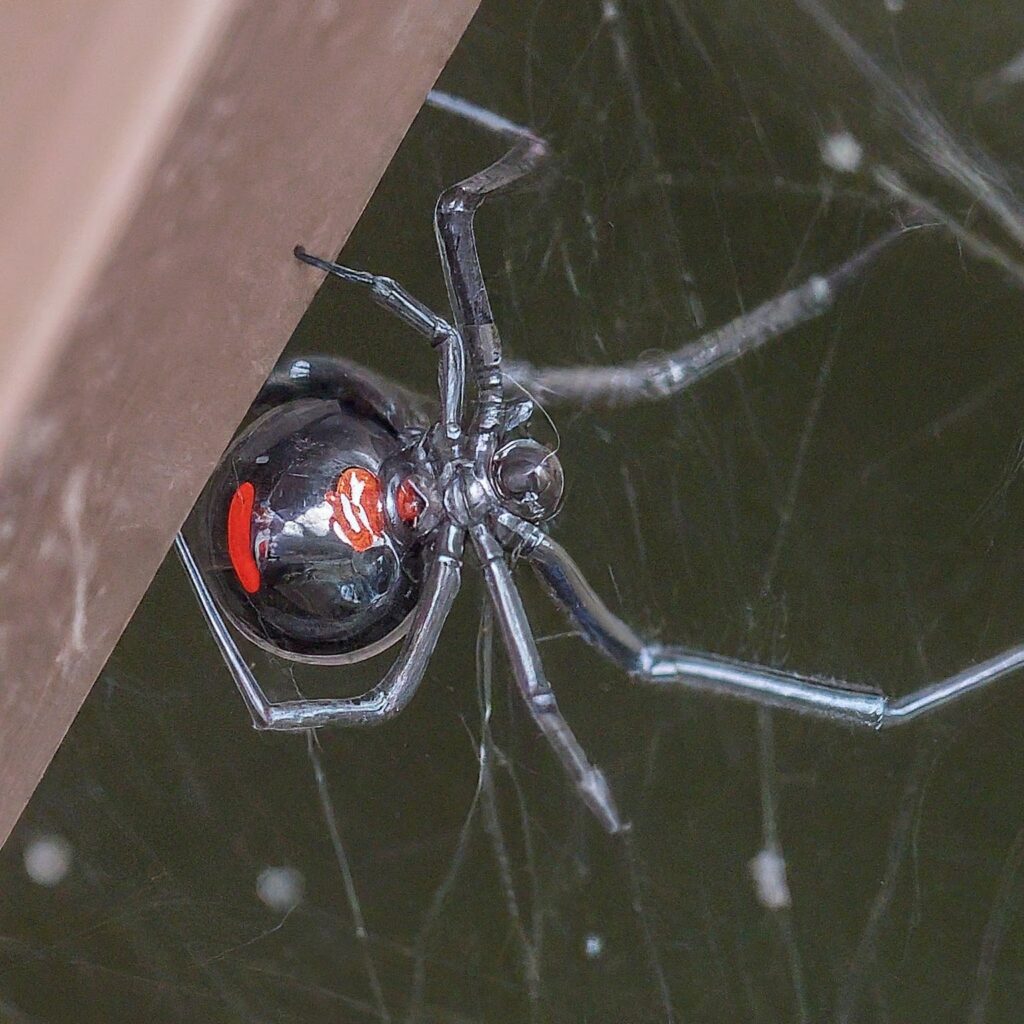
2. Black Widow Spider (Latrodectus spp.)
- Physical Characteristics: Black widow spiders are easily recognizable by their shiny black bodies and red hourglass-shaped markings on the underside of their abdomen.
- Habitat: Found worldwide in temperate regions, black widow spiders prefer dark, sheltered environments such as woodpiles, rock crevices, and cluttered areas.
- Behavior: When threatened, black widow spiders may play dead by remaining still and retracting their legs close to their bodies.
- Prey and Lifespan: They primarily feed on insects, small reptiles, and other spiders. Female black widows can live for up to 3 years, while males have a shorter lifespan.
- Size, Color, and Weight: Adult female black widows can have a body length of up to 1.5 inches (38 mm) and weigh around 0.5 grams, while males are smaller and lighter.
- Web: Builds loose, irregular webs in sheltered areas.
- Temperament: Can be aggressive if provoked. Their venom is potent but rarely fatal to humans.
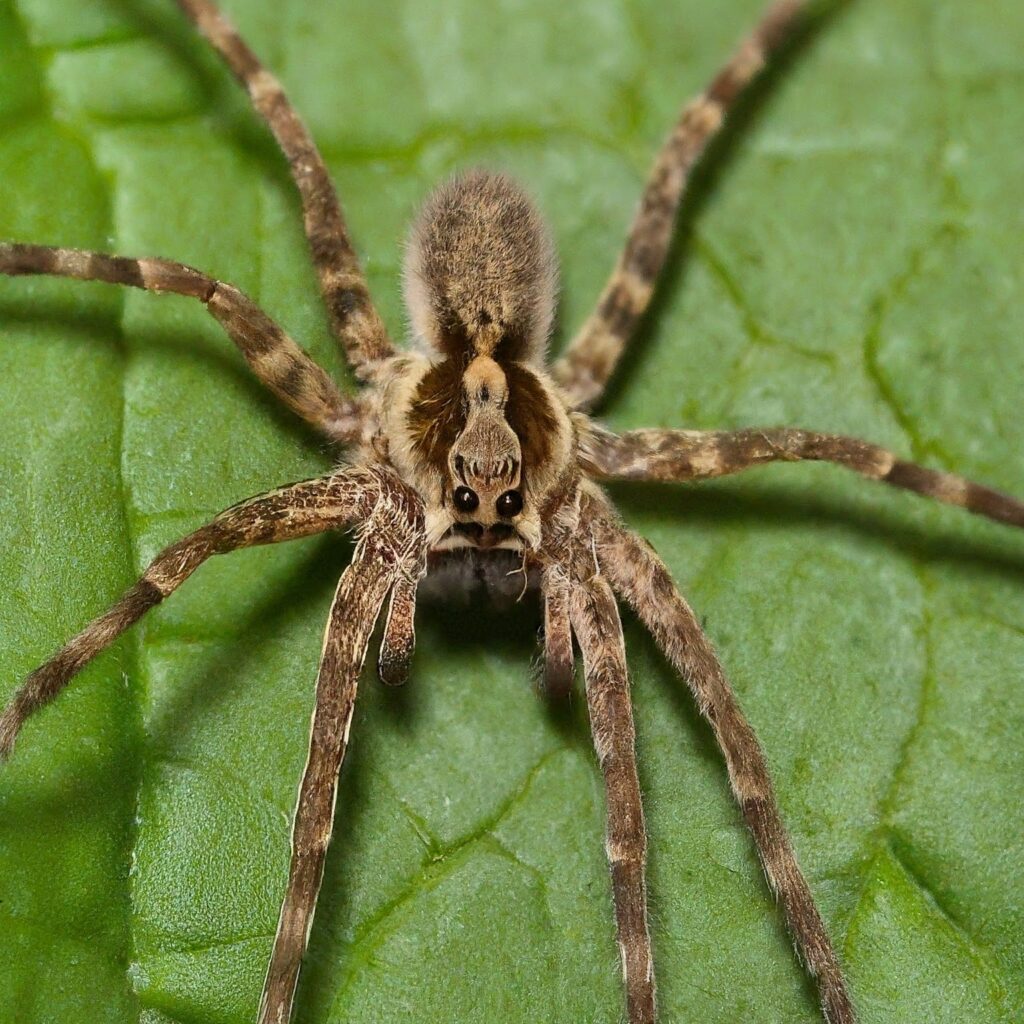
3. Wolf Spiders (Lycosidae family)
- Physical Characteristics: Wolf spiders are robust spiders with stout bodies and long, hairy legs. They are typically brown, gray, or black in color, often with mottled patterns.
- Habitat: Found worldwide in a variety of habitats, including forests, grasslands, and urban areas. They often reside in burrows or under leaf litter.
- Behavior: When threatened, wolf spiders may freeze or curl up their legs to appear dead, relying on camouflage to avoid detection.
- Prey and Lifespan: They are active hunters, preying on a variety of insects and other arthropods. Wolf spiders can live for 1 to 2 years.
- Size, Color, and Weight: Adult wolf spiders can have a body length of up to 1 inch (25 mm) and weigh around 0.5 grams, depending on the species.
- Web: Do not build webs, they actively hunt their prey.
- Temperament: Relatively docile and unlikely to bite unless cornered.
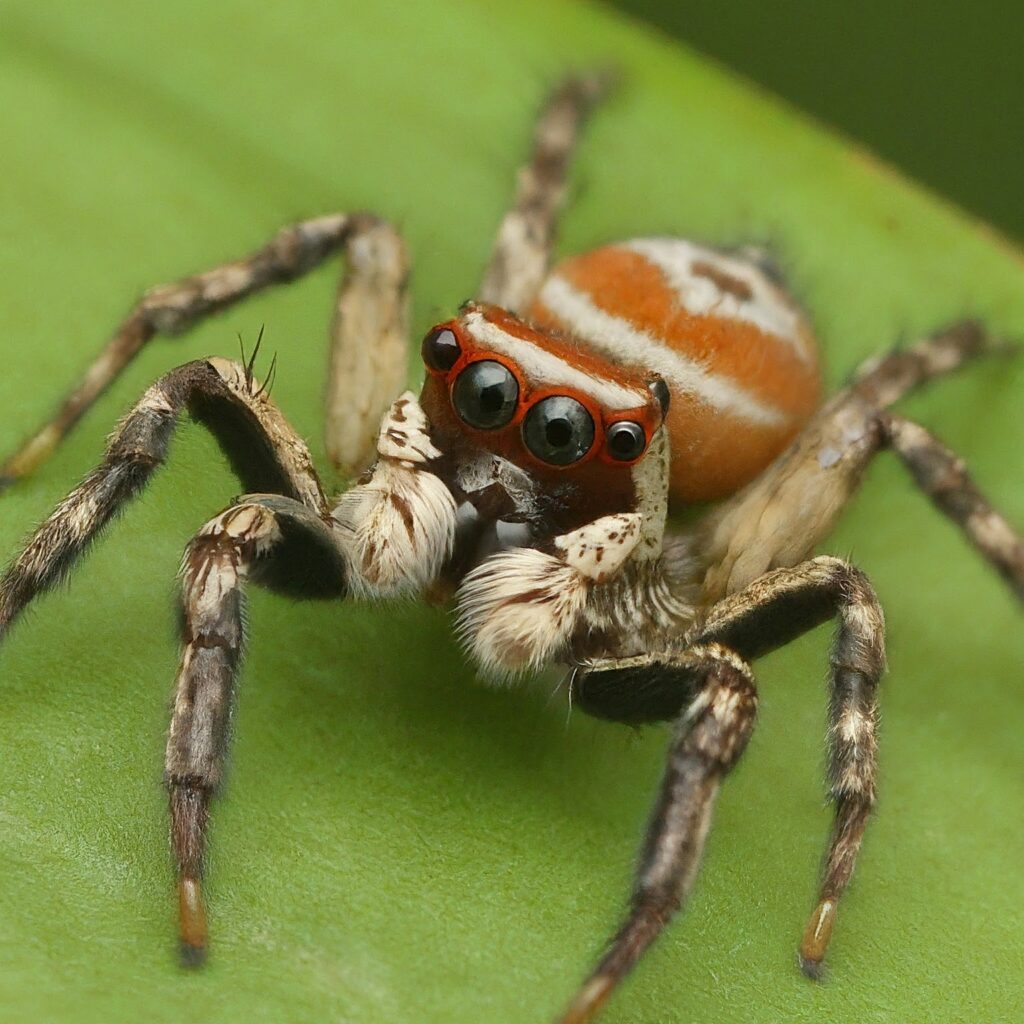
4. Jumping Spider (Salticidae family)
- Physical Characteristics: Jumping spiders are small to medium-sized spiders with compact bodies and short, powerful legs. They are known for their keen eyesight and ability to leap.
- Habitat: Found worldwide in diverse habitats, including forests, grasslands, and gardens. They often inhabit vegetation and human structures.
- Behavior: While jumping spiders do not typically play dead, they may freeze or remain motionless when threatened, relying on camouflage to evade predators.
- Prey and Lifespan: Jumping spiders are active hunters, preying on insects and other small arthropods. They have a lifespan of around 1 year.
- Size, Color, and Weight: Adult jumping spiders can vary in size and coloration depending on the species, with body lengths ranging from 0.1 to 0.8 inches (2.5 to 20 mm) and weights averaging around 0.01 grams.
- Web: Do not build webs, they rely on their excellent vision and jumping ability to hunt.
- Temperament: Curious and generally not aggressive.
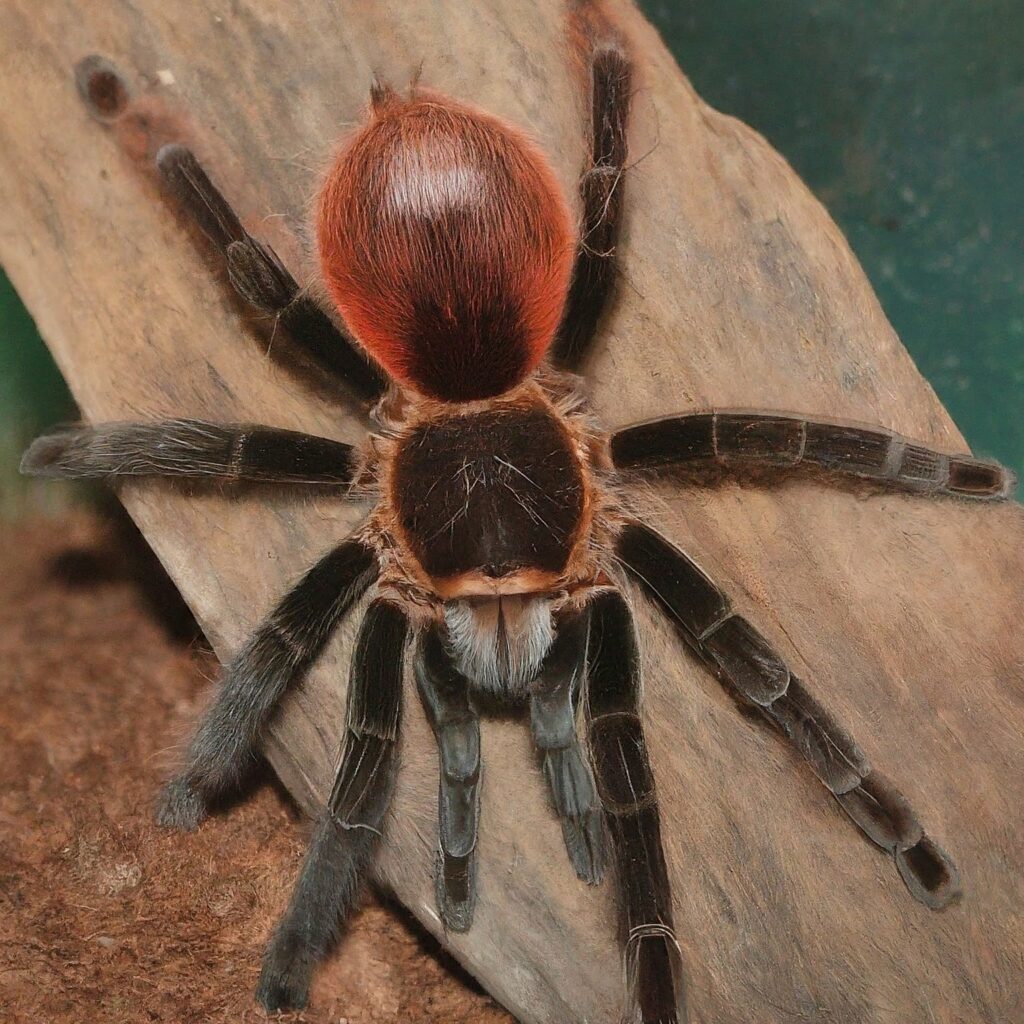
5. Tarantula (Theraphosidae family)
- Physical Characteristics: Tarantulas are large, hairy spiders with robust bodies and long, sturdy legs. They come in a variety of colors and patterns, depending on the species.
- Habitat: Found in tropical and subtropical regions worldwide, tarantulas inhabit burrows or shelters in soil, rocks, or trees.
- Behavior: When threatened, tarantulas may go into a defensive posture, raising their front legs and remaining motionless. Some species may also release urticating hairs as a defense mechanism.
- Prey and Lifespan: Tarantulas are ambush predators, feeding on insects, small vertebrates, and other spiders. They have a lifespan of up to 20 years or more, depending on the species.
- Size, Color, and Weight: Adult tarantulas can vary greatly in size, with body lengths ranging from 2 to 12 inches (5 to 30 cm) and weights ranging from a few grams to over 100 grams.
- Web: Some species build webs, while others are burrowers.
- Temperament: Varies depending on the species, but most are defensive and may bite if provoked. Their venom is rarely harmful to humans but can cause localized pain and swelling.
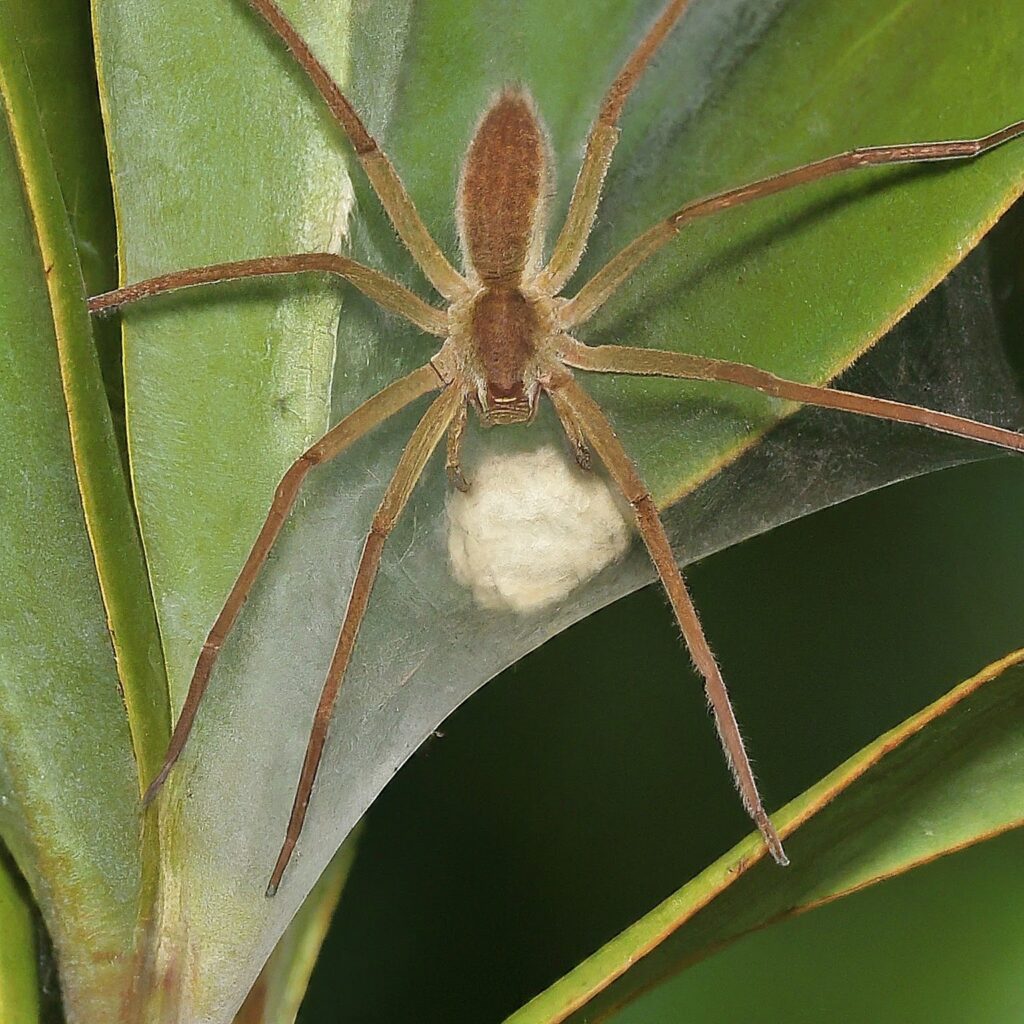
6. Nursery Web Spider (Pisauridae family)
- Physical Characteristics: Nursery web spiders are medium-sized spiders with elongated bodies and long, slender legs. They are typically brown or gray in color, often with mottled patterns.
- Habitat: Found worldwide in diverse habitats, including forests, grasslands, and wetlands. They often reside near water and vegetation.
- Behavior: When threatened, nursery web spiders may freeze or drop to the ground to avoid detection, relying on camouflage to escape predators.
- Prey and Lifespan: They are ambush predators, feeding on insects and other small arthropods. Nursery web spiders can live for 1 to 2 years.
- Size, Color, and Weight: Adult nursery web spiders can have a body length of up to 1 inch (25 mm) and weigh around 0.1 grams, depending on the species.
- Web: Builds unique tent-like webs to protect its egg sac.
- Temperament: Relatively docile, but may bite if provoked.
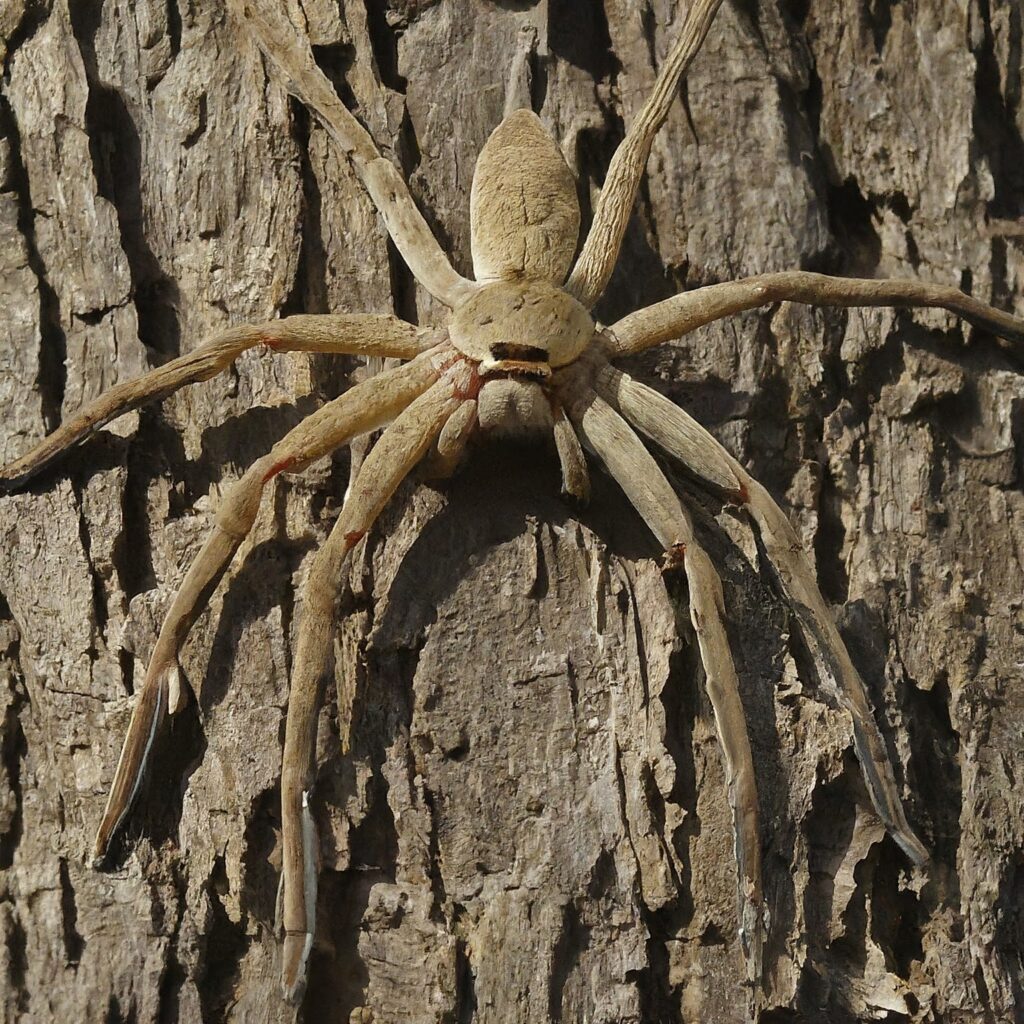
7. Huntsman Spider (Sparassidae family)
- Physical Characteristics: Huntsman spiders are large spiders with flattened bodies and long, slender legs. They are typically brown or gray in color, often with mottled patterns.
- Habitat: Found in tropical and subtropical regions worldwide, huntsman spiders inhabit vegetation, rocks, and human structures.
- Behavior: Huntsman spiders are known for their fast movements and agility. When threatened, they may freeze or drop to the ground, relying on camouflage to avoid detection.
- Prey and Lifespan: They are active hunters, feeding on insects and other arthropods. Huntsman spiders have a lifespan of around 1 to 2 years.
- Size, Color, and Weight: Adult huntsman spiders can have a body length of up to 6 inches (15 cm) and weigh around 0.5 grams, depending on the species.
- Web: Do not build webs, they actively hunt their prey.
- Temperament: Generally shy and will attempt to escape rather than bite. However, their bite can be painful if defensive.
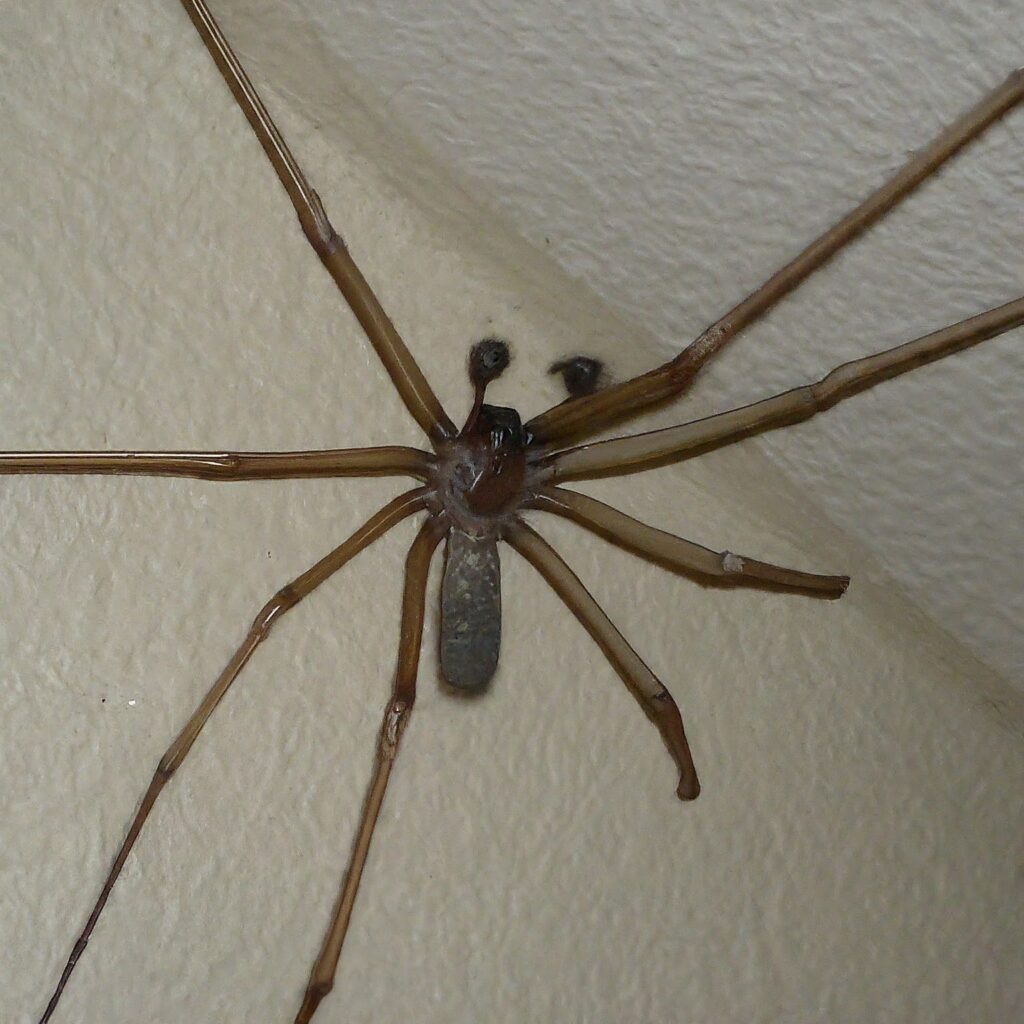
8. Giant House Spider (Eratigena atrica)
- Physical Characteristics: Giant house spiders are large spiders with elongated bodies and long, slender legs. They are typically brown or gray in color, with mottled patterns on their abdomen.
- Habitat: Found in Europe, North America, and parts of Asia, giant house spiders inhabit human structures such as houses, barns, and sheds.
- Behavior: When threatened, giant house spiders may retreat to dark corners or crevices and remain motionless, relying on camouflage to evade predators.
- Prey and Lifespan: They are opportunistic predators, feeding on insects and other arthropods found in their environment. Giant house spiders can live for 1 to 2 years.
- Size, Color, and Weight: Adult giant house spiders can have a body length of up to 1 inch (25 mm) and weigh around 0.1 grams.
- Web: Builds large, irregular webs in corners and crevices.
- Temperament: Generally docile and unlikely to bite, but may do so if provoked. Their bite is not medically significant to humans.

9. Goldenrod Crab Spider (Misumena vatia)
- Physical Characteristics: Goldenrod crab spiders are small to medium-sized spiders with flattened bodies and long, slender legs. They are typically yellow or white in color, allowing them to camouflage among flowers.
- Habitat: Found in North America, Europe, and Asia, goldenrod crab spiders inhabit flowering plants and shrubs, where they wait for prey.
- Behavior: Goldenrod crab spiders are ambush predators, lying in wait on flowers and capturing unsuspecting insects that come within range. When threatened, they may remain motionless or drop to the ground.
- Prey and Lifespan: They primarily feed on insects, particularly pollinators such as bees and butterflies. Goldenrod crab spiders can live for 1 to 2 years.
- Size, Color, and Weight: Adult goldenrod crab spiders can have a body length of up to 0.5 inches (12 mm) and weigh around 0.1 grams.
- Web: Do not build webs, they ambush prey from their camouflaged positions.
- Temperament: Relatively docile and rarely bite humans.

10. Orchard Spider (Leucauge venusta)
- Physical Characteristics: Orchard spiders are small to medium-sized spiders with elongated bodies and long, delicate legs. They are typically yellow or green in color, with intricate patterns on their abdomen.
- Habitat: Found in North and South America, orchard spiders inhabit orchards, gardens, and wooded areas, where they build orb-shaped webs to capture prey.
- Behavior: Orchard spiders are web-building spiders, constructing intricate webs to capture flying insects. When threatened, they may retreat to the center of their web or drop to the ground.
- Prey and Lifespan: They primarily feed on flying insects such as flies, mosquitoes, and moths. Orchard spiders can live for 1 to 2 years.
- Size, Color, and Weight: Adult orchard spiders can have a body length of up to 0.5 inches (12 mm) and weigh around 0.1 grams.
- Web: Build orb-shaped webs with intricate decorations.
- Temperament: Docile and rarely bite humans.
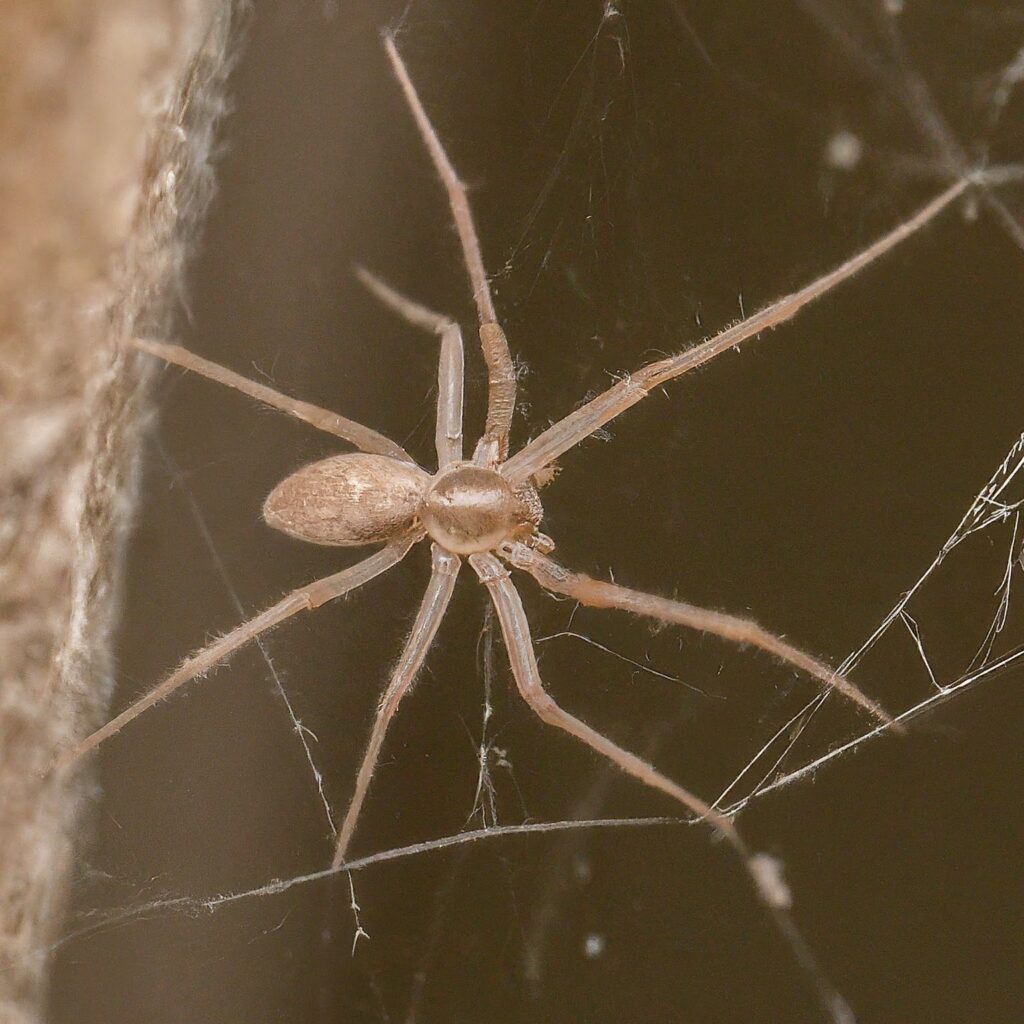
11. Common House Spider (Parasteatoda tepidariorum)
- Physical Characteristics: Common house spiders are small spiders with rounded bodies and short, sturdy legs. They are typically brown or gray in color, with mottled patterns on their abdomen.
- Habitat: Found worldwide in human habitations, common house spiders inhabit dark, sheltered areas such as basements, attics, and closets.
- Behavior: Common house spiders are web-building spiders, constructing messy, irregular webs to capture prey. When threatened, they may retreat to a corner or drop to the ground.
- Prey and Lifespan: They feed on a variety of insects and other arthropods found in their environment. Common house spiders can live for 1 to 2 years.
- Size, Color, and Weight: Adult common house spiders can have a body length of up to 0.4 inches (10 mm) and weigh around 0.1 grams.
- Web: Builds small, irregular webs in corners and crevices.
- Temperament: Relatively docile and unlikely to bite unless provoked. Their bite is not medically significant to humans.
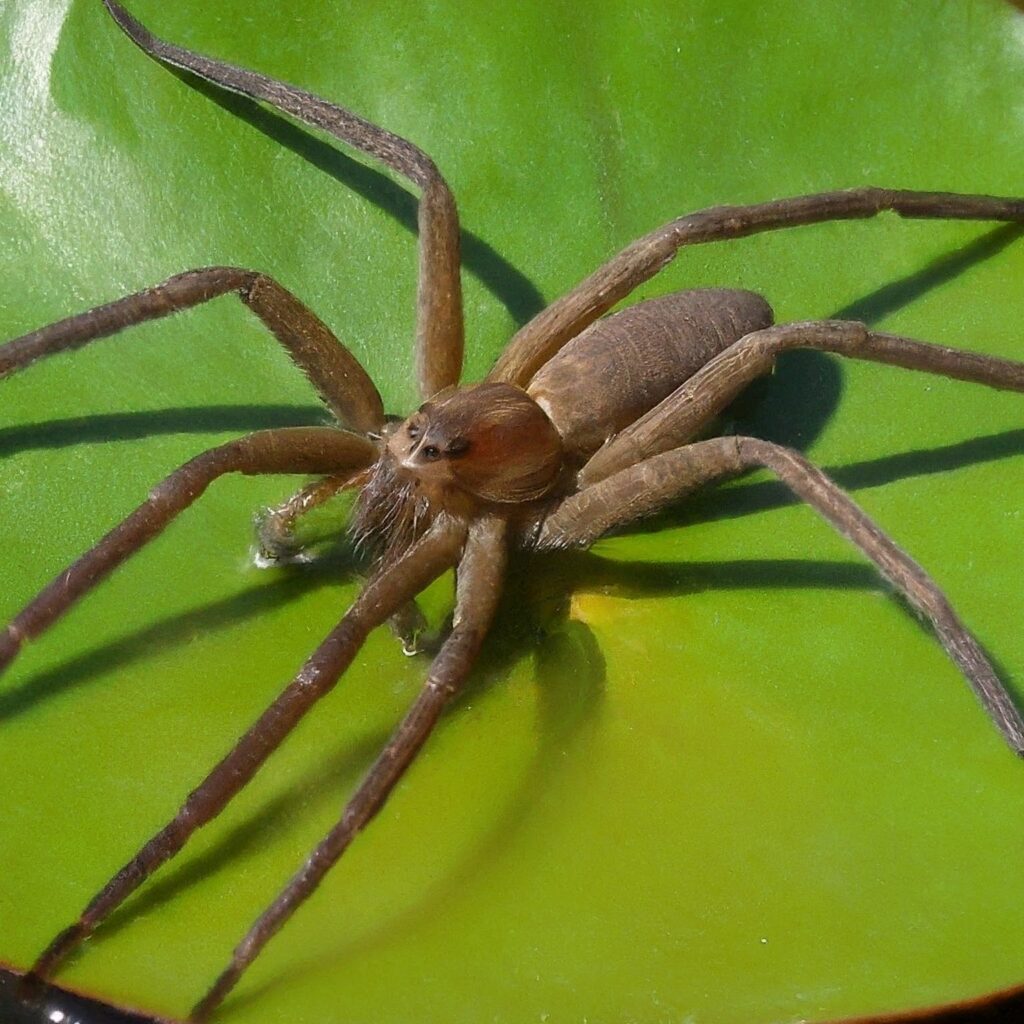
12. Fishing Spider (Dolomedes spp.)
- Physical Characteristics: Fishing spiders are large spiders with robust bodies and long, powerful legs. They are typically brown or gray in color, often with mottled patterns on their abdomen.
- Habitat: Found worldwide near bodies of water, fishing spiders inhabit the edges of ponds, streams, and marshes, where they hunt for prey on the water’s surface.
- Behavior: Fishing spiders are agile hunters, using their keen eyesight and sensitive hairs on their legs to detect vibrations from potential prey. When threatened, they may retreat to vegetation or remain motionless.
- Prey and Lifespan: They primarily feed on aquatic insects, small fish, and other small animals found near water. Fishing spiders can live for 1 to 2 years.
- Size, Color, and Weight: Adult fishing spiders can have a body length of up to 2 inches (50 mm) or more and weigh around 0.5 grams.
- Web: Do not build webs, they actively hunt their prey, including aquatic insects and small fish.
- Temperament: Can be aggressive if provoked, but their bite is not medically significant to humans.
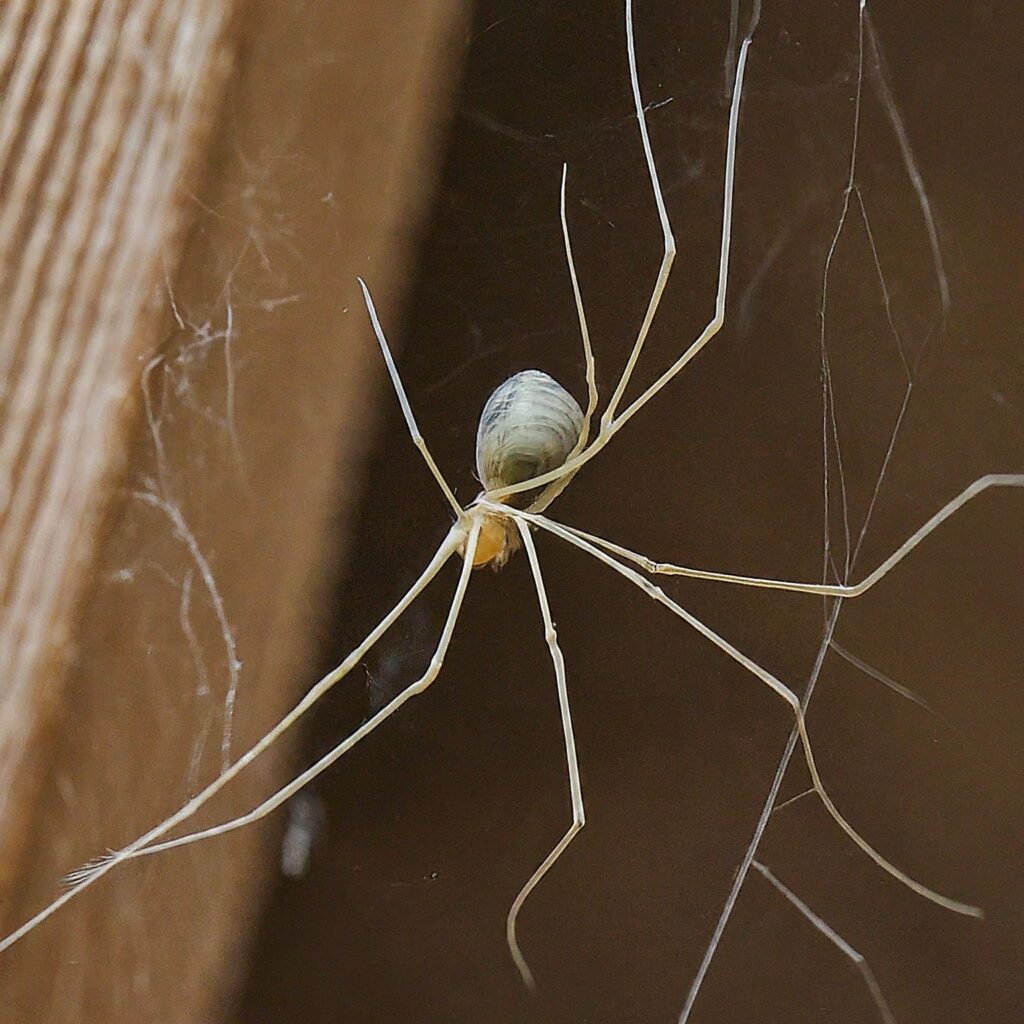
13. Cellar Spider (Pholcidae family)
- Physical Characteristics: Cellar spiders are small spiders with elongated bodies and long, delicate legs. They are typically pale brown or gray in color, with small bodies and long, thin legs.
- Habitat: Found worldwide in dark, damp environments, cellar spiders inhabit cellars, basements, caves, and other underground structures.
- Behavior: Cellar spiders are web-building spiders, constructing messy, irregular webs in corners and crevices to capture prey. When threatened, they may vibrate rapidly or drop to the ground.
- Prey and Lifespan: They primarily feed on small insects and other arthropods that become ensnared in their webs. Cellar spiders can live for 1 to 2 years.
- Size, Color, and Weight: Adult cellar spiders can have a body length of up to 0.4 inches (10 mm) and weigh around 0.1 grams.
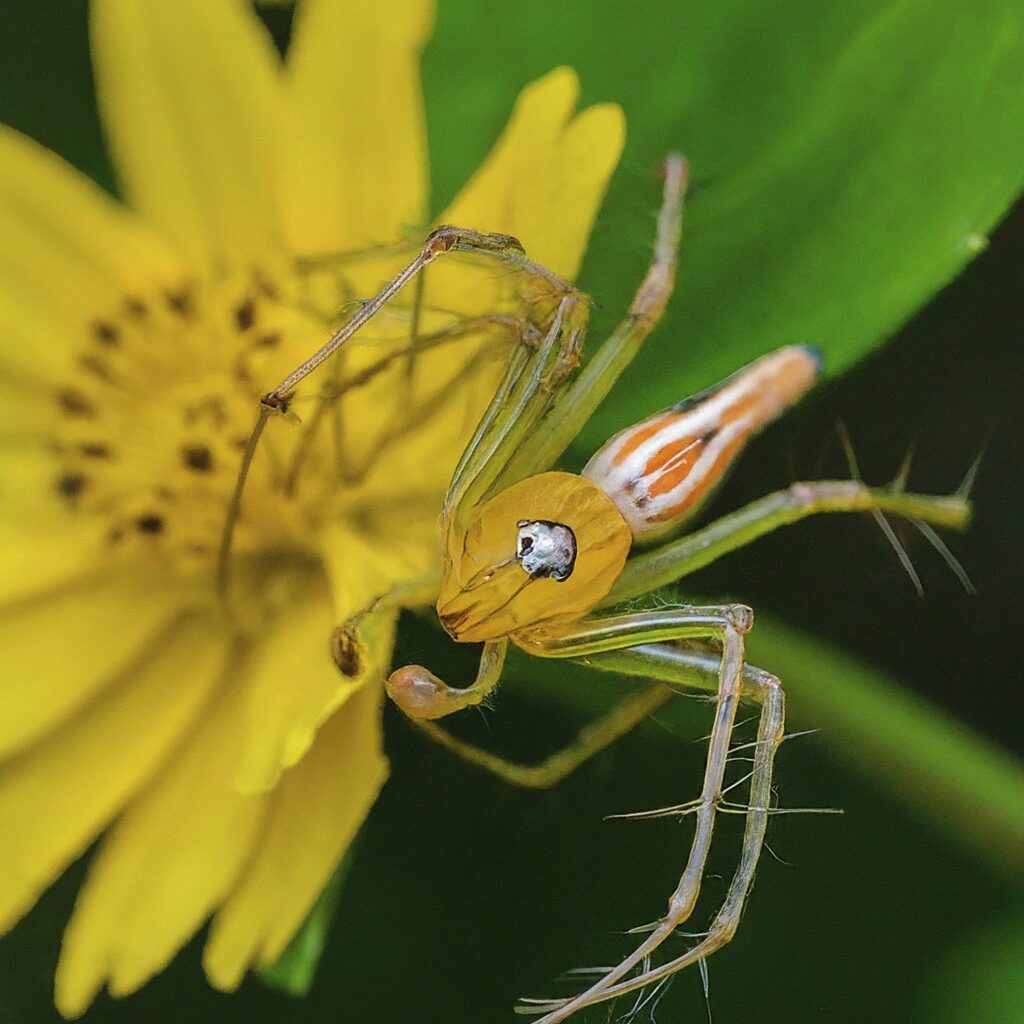
14. Lynx Spider (Oxyopidae family)
- Physical Characteristics: Lynx spiders are small to medium-sized spiders with elongated bodies and long, spiny legs. They are typically brown or gray in color, often with mottled patterns on their abdomen.
- Habitat: Found worldwide in a variety of habitats, including forests, grasslands, and gardens. Lynx spiders often inhabit vegetation and flowers.
- Behavior: Lynx spiders are active hunters, stalking prey on vegetation and ambushing insects that come within striking distance. When threatened, they may retreat to a leaf or remain motionless.
- Prey and Lifespan: They primarily feed on insects and other small arthropods, capturing prey with their long legs and agile movements. Lynx spiders can live for 1 to 2 years.
- Size, Color, and Weight: Adult lynx spiders can have a body length of up to 0.5 inches (12 mm) and weigh around 0.1 grams.
- Web: Do not build webs, they actively hunt their prey from their camouflaged positions on flowers.
- Temperament: Docile and rarely bite humans.
Conclusion
In conclusion, thanatosis, or playing dead, is a fascinating defensive behavior observed in various spider species as a means of evading predators or avoiding confrontation. From Southern house spiders to black widow spiders, wolf spiders, jumping spiders, tarantulas, and beyond, these arachnids employ diverse strategies to survive in their respective habitats. By studying the behaviors and adaptations of spiders that play dead, we gain valuable insights into the complex interactions between predators and prey in the natural world.
FAQ (Continued)
Q: How long do spiders typically play dead when exhibiting thanatosis? A: The duration of thanatosis behavior can vary depending on the threat level and the individual spider’s response. Some spiders may remain motionless for a brief period, while others may maintain the posture for an extended time until they perceive the threat has passed.
Q: Are there any other defensive behaviors observed in spiders besides thanatosis? A: Yes, spiders exhibit a range of defensive behaviors, including fleeing, hiding, camouflage, aggression, and web-building. These strategies help spiders evade predators, protect their territories, and secure prey.
Q: Are spiders that play dead dangerous to humans? A: In general, spiders that exhibit thanatosis are not considered dangerous to humans. However, some species, such as black widow spiders and tarantulas, possess venom that can cause harm if they feel threatened and bite in self-defense. It’s essential to exercise caution and respect when encountering spiders in their natural habitats.
Q: Can spiders that play dead be kept as pets? A: While some spider species are kept as pets by enthusiasts, including tarantulas and jumping spiders, it’s essential to research the specific care requirements of each species before attempting to keep them in captivity. Additionally, captive spiders should be provided with appropriate housing, diet, and environmental enrichment to ensure their health and well-being.
Q: How can I tell if a spider is playing dead or actually dead? A: Determining whether a spider is playing dead or deceased can be challenging, as both scenarios may involve the spider appearing motionless. In some cases, gently prodding the spider with a soft object may elicit a response if it is alive. However, if you’re unsure, it’s best to avoid handling the spider and observe it from a safe distance to see if it eventually moves or displays signs of life.
Q: How long do spiders typically play dead when exhibiting thanatosis? A: The duration of thanatosis behavior can vary depending on the threat level and the individual spider’s response. Some spiders may remain motionless for a brief period, while others may maintain the posture for an extended time until they perceive the threat has passed.
Q: Are there any other defensive behaviors observed in spiders besides thanatosis? A: Yes, spiders exhibit a range of defensive behaviors, including fleeing, hiding, camouflage, aggression, and web-building. These strategies help spiders evade predators, protect their territories, and secure prey.

94% of pet owners say their animal pal makes them smile more than once a day. In 2007, I realized that I was made for saving Animals. My father is a Vet, and I think every pet deserves one. I started this blog, “InPetCare”, in 2019 with my father to enlighten a wider audience.
